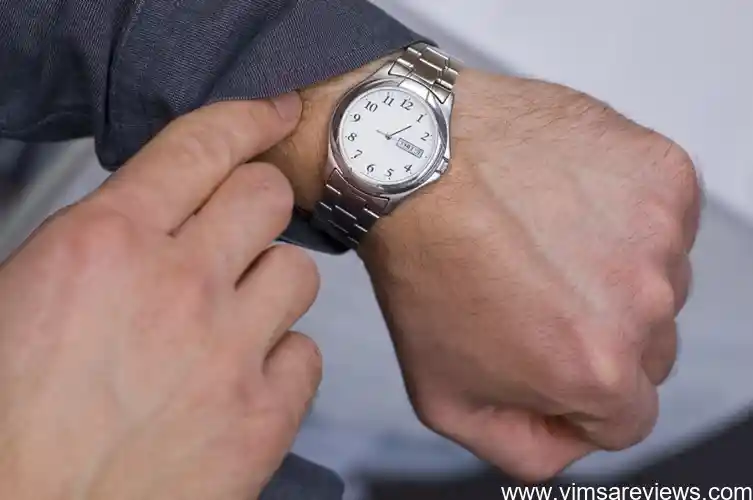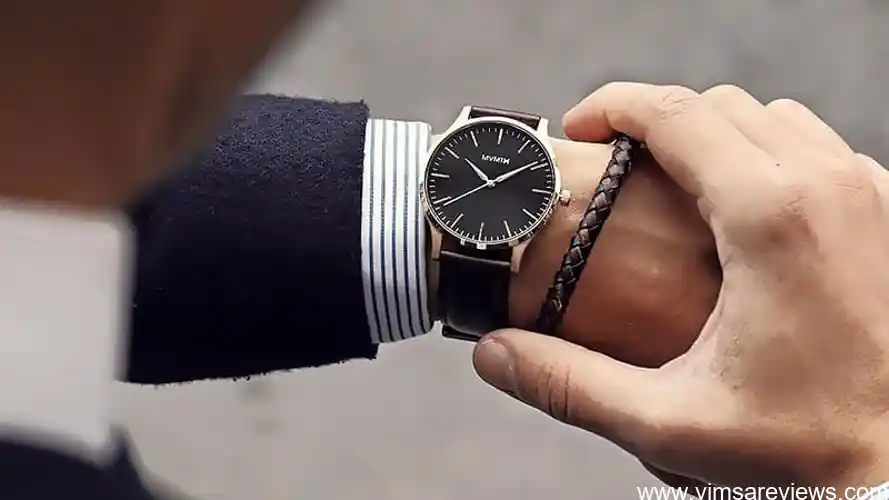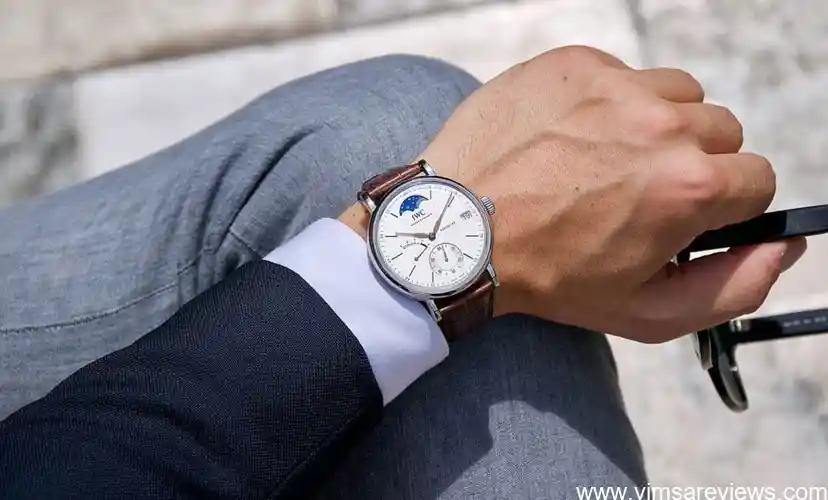**The Enigmatic Allure of Wristwatch Placement: A Journey of Cultural Etiquettes, Personal Expression, and Practical Considerations**Have you ever pondered which wrist should rightfully adorn your timepiece, the left or the right? While this seemingly innocuous choice may appear a matter of personal preference, it unveils a fascinating tapestry of cultural customs, ergonomic considerations, and personal style.Throughout history, wristwatch placement has carried profound symbolic meanings, varying across cultures and societies. These subtle nuances reflect deep-rooted customs and beliefs, shaping the etiquette surrounding the positioning of our timekeepers.Moreover, the ergonomics of wristwatch placement play a crucial role in optimizing comfort and practicality. Understanding the advantages associated with wearing a watch on your dominant hand can enhance your daily routine. Additionally, considering comfort factors for different activities ensures a harmonious coexistence between your watch and your lifestyle.Beyond mere functionality, the placement of your watch offers a compelling canvas for self-expression. It serves as a subtle yet powerful reflection of your individuality, conveying personality traits and aesthetic preferences. Whether you gravitate towards classic styles or embrace bold fashion statements, your watch’s placement becomes an extension of your unique narrative.As we delve into the intricacies of wristwatch placement, we will navigate a labyrinth of commonly asked questions and clarifications, resolving doubts and providing guidance. By exploring ambidextrous considerations, etiquette in formal settings, and exceptions to the norm, we aim to equip you with the knowledge to navigate the enigmatic world of wristwatch positioning with confidence and eloquence.
Deciphering the Art of Watch Positioning: Which Wrist Should Adorn Your Timepiece?

Navigating the realm of wristwatch positioning can be an intriguing endeavor, akin to deciphering a secret code. Whether you’re a seasoned timepiece aficionado or a novice embarking on your first foray into horology, the question of which wrist to adorn your watch often arises.
Cultural customs, ergonomic considerations, personal style, and even the subtle nuances of body language all play a role in shaping this decision. In this comprehensive guide, we’ll delve into the intricacies of watch placement, empowering you to make an informed choice that reflects your unique style, maximizes comfort, and perhaps even reveals a glimpse of your personality.
Cultural Customs and Etiquette: Uncovering the Significance of Wristwatch Placement

Delving into the realm of timekeeping etiquette, we unravel the intricacies of “what wrist to wear watch.” Cultural customs and societal norms entwined with watch placement unveil a fascinating tapestry of symbolism and meaning. Across diverse cultures and epochs, the wrist adorned with a watch has carried significant connotations. From ancient talismans believed to ward off evil spirits to modern-day fashion statements, the placement of your watch transcends mere functionality, becoming a subtle yet potent expression of cultural heritage and personal style. Understanding these cultural nuances not only enhances your watch-wearing experience but also fosters a deeper appreciation for the rich tapestry of traditions that shape our societies.
Historical Origins and Symbolic Meanings
Cultural customs and etiquette have a profound influence on the significance of wristwatch placement. Historically, watches were primarily worn on the left wrist, as this was the hand less likely to be used for manual labor or combat. This practice persists in many cultures today, as it is seen as a sign of respect and formality. In some societies, wearing a watch on the right wrist may be associated with being left-handed or non-traditional. However, as fashion and personal expression evolve, the rules surrounding wristwatch placement are becoming more fluid. Ultimately, the choice of which wrist to adorn your timepiece is a personal one, reflecting your individual style and cultural background.
Variations Across Cultures and Societies
Have you ever wondered why people wear watches on different wrists? It’s not just a matter of personal preference. Cultural customs and etiquette play a significant role in determining which wrist adorns your timepiece. In some cultures, wearing a watch on the left wrist is considered a sign of respect, while in others, it’s the right wrist that holds symbolic value. These customs are often rooted in historical beliefs and traditions, passed down through generations. Exploring these cultural variations can help you appreciate the deeper significance behind wristwatch placement and make informed choices that reflect your cultural heritage and personal style.
Ergonomics and Functionality: Optimizing Comfort and Practicality

When it comes to choosing the right wrist for your watch, ergonomics and functionality play a crucial role. Wearing your watch on your dominant hand, the one you use for writing, eating, and most other daily activities, can provide several advantages. For starters, it allows for easy access to the watch face, making it convenient to check the time or adjust settings quickly. Additionally, having the watch on your dominant hand can help protect it from bumps or scratches that might occur during daily use. If you’re particularly active or engage in sports, choosing the wrist that offers the best comfort and practicality for the specific activity is essential. For instance, if you play golf, wearing the watch on your non-dominant hand might be more comfortable and less likely to interfere with your swing. By considering ergonomics and functionality, you can optimize the comfort and practicality of your watch, ensuring it becomes an indispensable tool that complements your lifestyle seamlessly.
Dominant Hand Advantages
When it comes to choosing which wrist to wear your watch on, ergonomics and functionality play a significant role. If you’re right-handed, wearing your watch on your left wrist allows for easy access to the controls and dials without hindering your writing or other right-handed activities. On the other hand, if you’re left-handed, wearing your watch on your right wrist provides similar advantages. Additionally, consider the activities you engage in regularly. If you work in a field that requires frequent use of your hands, wearing your watch on your non-dominant wrist can prevent it from getting in the way or being damaged. By considering these factors, you can optimize both comfort and practicality when deciding which wrist to adorn with your timepiece.
Comfort Considerations for Different Activities
When it comes to choosing which wrist to wear your watch on, comfort and practicality play a significant role. For most people, wearing the watch on their non-dominant hand is more comfortable and ergonomic. This is because we tend to use our dominant hand for a wider range of activities, from writing and typing to eating and playing sports. Putting the watch on the non-dominant hand keeps it out of the way and reduces the risk of accidental bumps or knocks. Furthermore, if your watch has any buttons or dials, they’ll be easier to access and operate with your dominant hand.
Personal Style and Expression: Watch Placement as a Reflection of Individuality

When it comes to adorning your wrist with a timepiece, there’s more to consider than just its functionality or aesthetic appeal. Your watch placement can be a subtle yet powerful expression of your personal style and individuality. It’s like choosing the perfect accessory to complement your outfit – it adds that extra touch of flair that sets you apart. Whether you prefer the classic look of wearing your watch on your dominant hand or favor the more unconventional style of gracing your non-dominant wrist, your choice reflects your unique personality and fashion sense. So, take a moment to contemplate the message you want to convey through your watch placement. Let it be a statement piece that speaks volumes about who you are, or a subtle hint that invites others to discover the depths of your character.
Aesthetic Preferences and Fashion Statements
When it comes to wearing a watch, your choice of wrist can be a subtle yet powerful reflection of your personal style and individuality. Similar to the way you accessorize with jewelry or clothing, the wrist you choose to adorn with your timepiece can convey a message about your personality and preferences. Whether you prefer the classic, understated look of a watch on your dominant hand or the more unconventional, fashion-forward appeal of wearing it on your non-dominant hand, your choice becomes a statement about who you are. It’s a chance to express your unique style, showcase your creativity, and convey a sense of your personality to the world.
Conveyance of Personality Traits
When it comes to adorning your wrist with a timepiece, the choice of which wrist often becomes an extension of your personal style. Just as you meticulously select clothing and accessories that reflect your personality, the placement of your watch can subtly communicate your individuality. Whether you prefer the classic look of wearing it on your non-dominant hand, or embrace the bolder statement of sporting it on your dominant hand, your choice becomes a subtle yet effective way to express yourself. Your watch becomes an extension of your personal style, a reflection of your unique taste and preferences.
Commonly Asked Questions and Clarifications: Resolving Doubts and Providing Guidance
Have you ever wondered why people wear watches on different wrists? There are a multitude of reasons, from cultural customs to personal preferences. Understanding the nuances of watch placement can help you make an informed decision about which wrist to adorn your timepiece. Whether you’re right or left-handed, there are ergonomic considerations to optimize comfort and practicality. Additionally, watch placement can subtly convey your personality and style, making it a meaningful expression of individuality.
Ambidextrous Considerations
Have you ever wondered why people wear their watches on different wrists? Is there a protocol or social norm to follow? While the placement of your watch might seem like a trivial choice, it actually carries subtle cultural, practical, and personal implications. In this article, we’ll explore the art of watch positioning, deciphering the significance of which wrist adorns your timepiece. We’ll delve into cultural customs and etiquette, ergonomic considerations, and personal style expressions, equipping you with the knowledge to make an informed decision about where to wear your watch, whether you’re a seasoned watch aficionado or a first-time wearer.
Etiquette in Formal Settings
While there may be a general consensus on which wrist to wear a watch, there are always exceptions to the rule. For example, if you’re left-handed, you may find it more comfortable to wear your watch on your right wrist, even if this goes against cultural norms. Ultimately, the decision of which wrist to wear your watch is a personal one, and you should choose the option that feels most comfortable and suits your individual style.
Exceptions and Special Circumstances
Commonly Asked Questions and Clarifications: Resolving Doubts and Providing Guidance
Regarding watch placement, a few common questions and clarifications may arise that require our attention. For instance, you might wonder about the etiquette when wearing a watch on your non-dominant hand. Or perhaps you’re curious about the appropriate wrist to adorn your timepiece in formal settings. Additionally, you might encounter special circumstances or exceptions that warrant further clarification. In this section, we aim to address these queries and provide comprehensive guidance, ensuring you navigate the intricacies of watch positioning with confidence and ease. Dive into the following paragraphs to uncover the answers you seek, leaving no room for lingering doubts or uncertainties.
Q1. On which wrist should men wear their watch?
Ans: Traditionally, men wear their watches on their left wrist.
Q2. Why do people wear watches on their right wrist?
Ans: Lefties often wear their watches on their right wrist for better functionality.
Q3. Which wrist is better for wearing a watch for comfort?
Ans: The wrist that provides the most comfort and functionality for the individual.
Q4. Is it acceptable to wear a watch on your dominant hand?
Ans: Yes, it is acceptable, but some may find it less convenient.
Q5. Does it matter which wrist you wear a watch on?
Ans: Not necessarily, it is mainly a matter of personal preference and convenience.
Q6. Is it considered more formal to wear a watch on your left or right wrist?
Ans: Traditionally, it is considered more formal to wear a watch on the left wrist.
